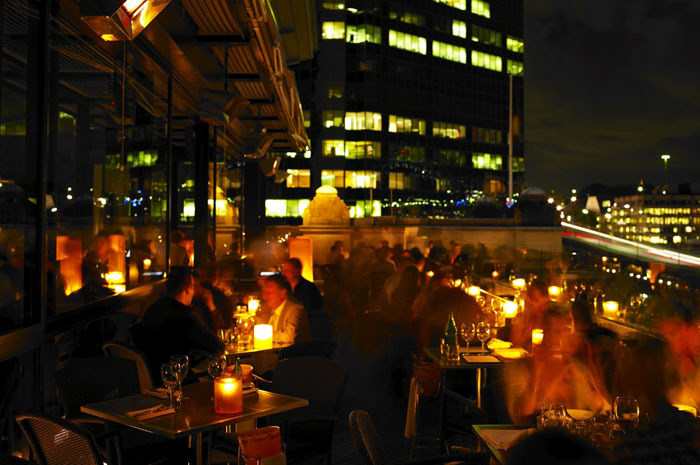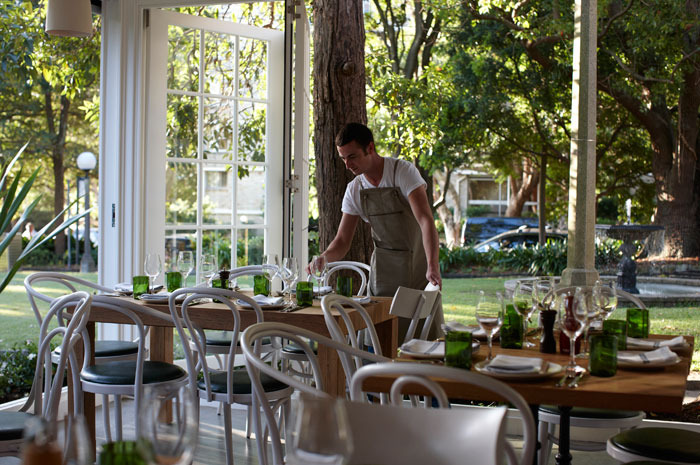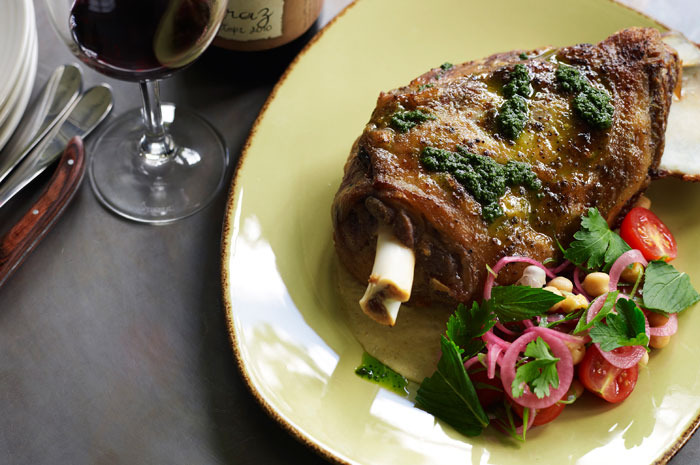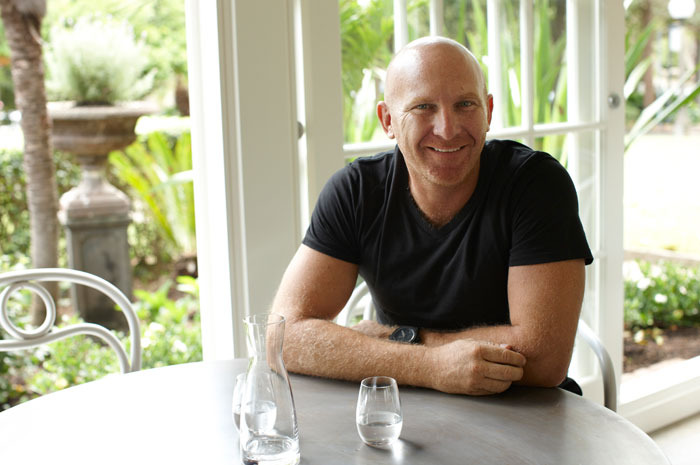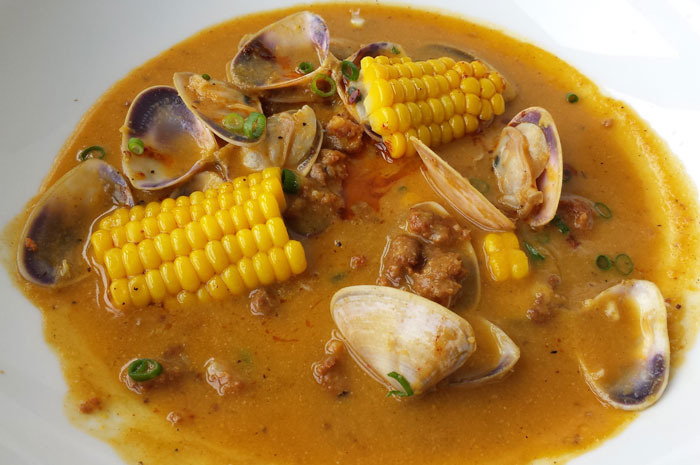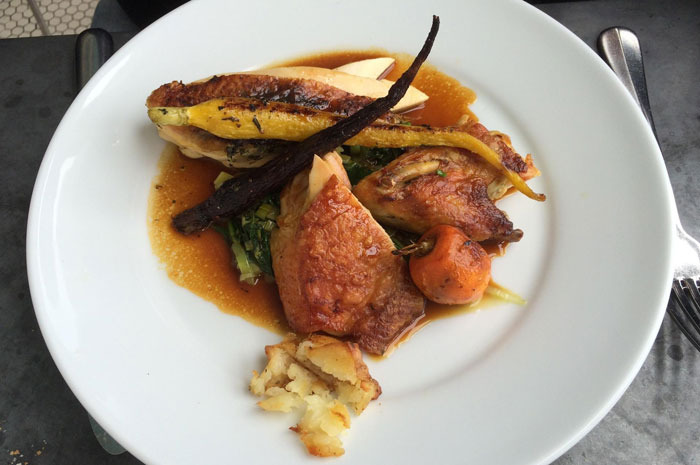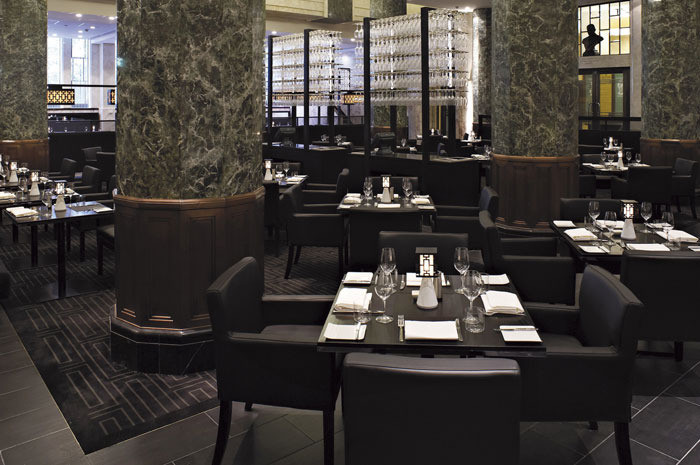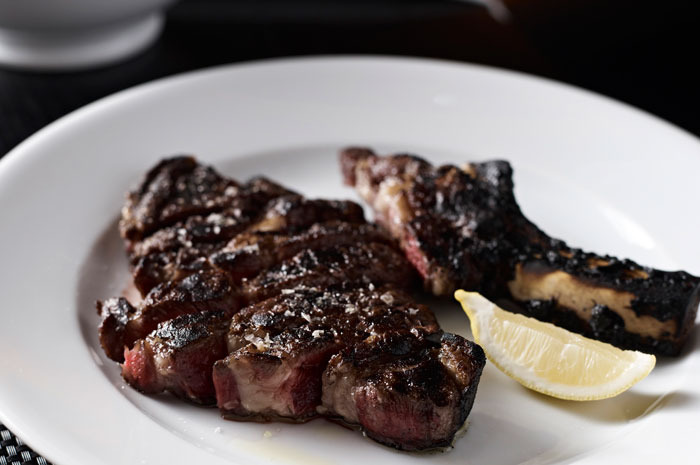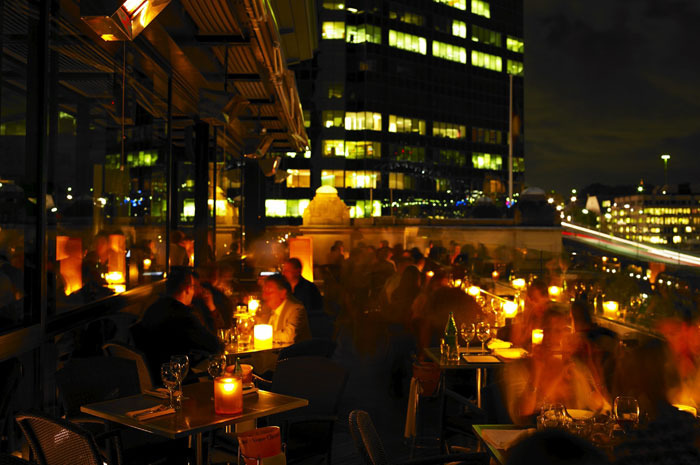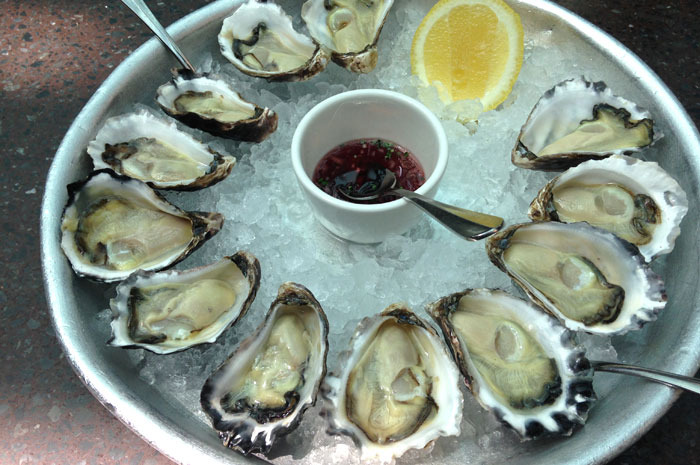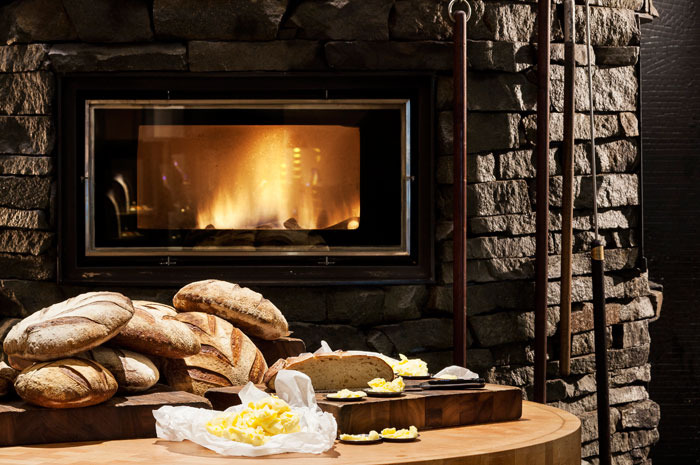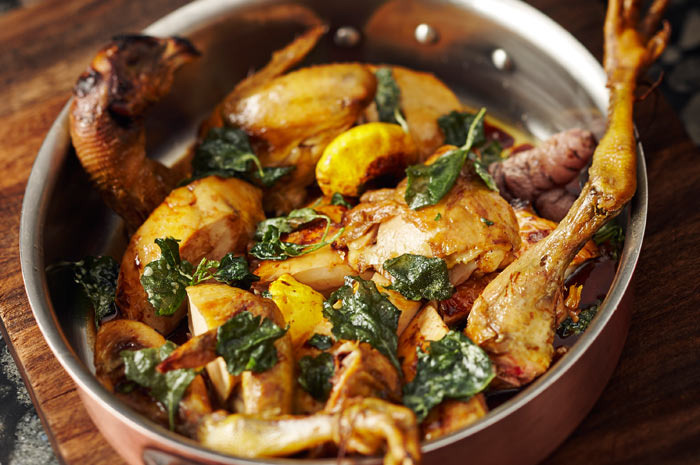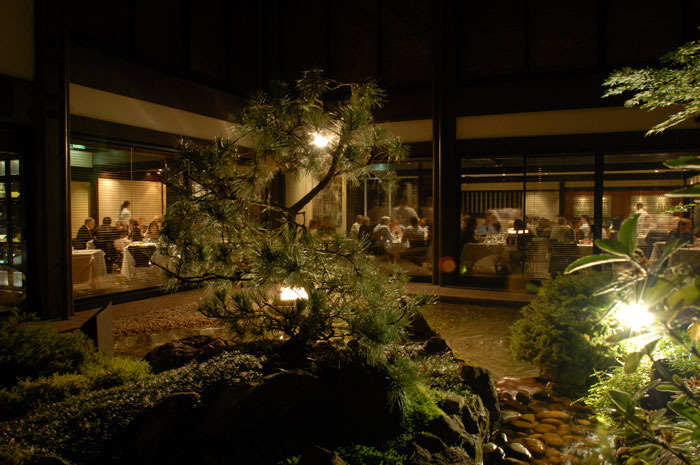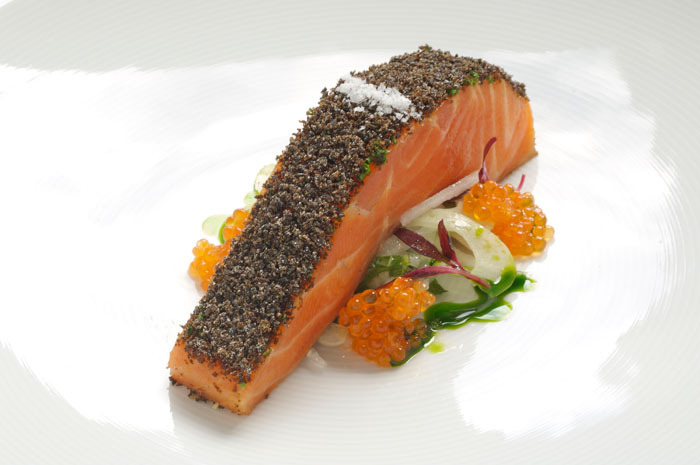Roast Chook, Kinkawooka Mussels, And Other Great Food In Sydney
Sydney, the capital of New South Wales and the largest city in Australia by population, is one of the world's great restaurant capitals. It has all the fixin's: an affluent and well-traveled citizenry; a multi-cultural population that has introduced ingredients and cooking techniques here from all over Europe, Asia, and Latin America; and a ready source of excellent home-grown or -harvested raw materials, from exotic tropical fruits to first-rate grass-fed beef and lamb to some of the world's best seafood — oh, and wines of nearly every kind, as good as anybody's and, on occasion, better.
Chiswick
The greenhouse-like dining room Chiswick, where the surrounding greenery and vividly flavored Mediterranean-accented cooking evoke comparisons with California.
Roasted Lamb Shoulder
Whole roasted shoulder of Moran Family lamb, with mint sauce and a salad of chickpeas, red onions, cherry tomatoes, and flat-leaf parsley from the garden.
Matt Moran at Chiswick
Chef–restaurateur Matt Moran at Chiswick. Moran's restaurants include two branches of Chiswick, Aria, North Bondi Fish, and Opera Bar in Sydney, and Aria and Riverbar & Kitchen in Brisbane. He is also known for his appearances on the Australian versions of The Chopping Block and MasterChef.
Sean's Corn Soup
Layers of flavor permeate the corn soup with pipis (baby clams), and chorizo at Sean's Panorama.
Roast 'Chook'
Roast "chook" (Australian for chicken) on a bed of spinach, with assorted carrots, at Sean's Panorama. Proprietor Sean Moran grows many of the vegetables he serves, including these, on his own farm.
Rockpool Bar & Grill
The impressive Art Déco interior at Rockpool Bar & Grill, done in blacks and grays, including elements of marble, steel, leather, and stained oak, with custom-designed light fixtures and carpets.
Ribeye Steak Rockpool Style
Ribeye steak Rockpool style: a piece of 36-month, dry-aged, grass-fed beef from Cape Grim in Tasmania (famous for its beef cattle), served on the bone.
Café Sydney
The candlelit terrace at Café Sydney, atop the 1845-vintage Customs House, where locals come to eat superb seafood and savor the views.
South Australian Oysters
South Australian oysters from Smoky Bay, served on the half-shell at Café Sydney.
Wood-Burning Oven at Pei Modern
The wood-burning oven, with bread baked in it, at Pei Modern, off the lobby of the Four Seasons Hotel.
Roasted Holmbrae Chicken
Whole roasted Holmbrae chicken, with roasted squash and butter beans, at Pei Modern.
Tetsuya's
The dining room at Tetsuya's, seen from the exquisite Japanese garden.
The Famous Confit Petuna Ocean Trout
The most famous dish at Tetsuya's, confit Petuna ocean trout from Tasmania with a kombu crust, fennel, and ocean trout roe.
